Tom Kepler's Blog, page 30
August 16, 2012
New Facebook "Like" Button Added to This Blog
 Now you can "Like" a posted article at this blog by clicking a button at the bottom of the article.
Now you can "Like" a posted article at this blog by clicking a button at the bottom of the article. Also, you can share to Twitter, Facebook, Blogger, Google +, or email the article. These functions have been available for some time. When you float your cursor over the icon, it turns to color.
I added the HTML to my blog's template for this widget by using the code found at My Blogger Tricks.
Hope this is useful!
Published on August 16, 2012 03:33
August 14, 2012
Consciousness-Based Education and Teaching
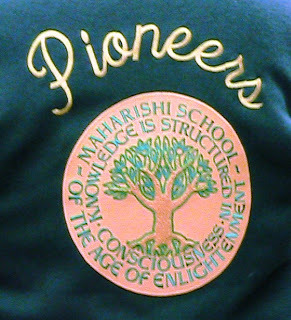 A new school year is beginning, and I am reminded again just how important Consciousness-BasedSM education is.
A new school year is beginning, and I am reminded again just how important Consciousness-BasedSM education is.Maharishi University of Management describes Consciousness-Based education in the following manner:
The purpose of Consciousness-Based education is to develop every student's total potential to the maximum — their creativity, intelligence, and happiness. This is the foundation for professional success and personal fulfillment as well as for creating positive change in society.The university's webpage provides further detail, saying that there are four components of CBE:
Direct development of consciousnessA unifying framework for all human knowledgeSpecial teaching & learning techniques that develop holistic awarenessStress-free routine and nourishing environmentThe school where I teach, Maharishi School, is a Pre-K through grade 12 school that teaches Consciousness-Based education. Right now teachers are meeting and discussing points 2 and 3 on the list above.
We are reviewing and enriching our understanding of how the experience of enlivening our awareness through Transcendental Meditation can be used as an educational tool to connect the student to the teaching of the curriculum. Education knows that material presented must be meaningful and relevant in order for students to assimilate it. Pretty hard for assimilation to occur if no one's paying attention!
Consciousness or awareness is the factor that unifies all fields of study. Connecting the disciplines of study to each student's own self-awareness provides a unifying structure for learning. MUM lists four ways in which a student gains by studying at a CBE school.
You understand each discipline down to its depth.You understand the relationships among all subjects of study. You connect what you are studying to your personal growth of consciousness — knowledge becomes more relevant. You increasingly experience and understand life as a whole. As a teacher, our pre-year inservice at Maharishi School includes studying the tools to use to implement Consciousness-Based education.
The whole course on the first day — In each course you take, you’ll learn all the main principles of the course at the start. The remainder of the course then elaborates these themes.Unified field charts — These wall charts ensure that you never get “lost in the parts” — you always see the big picture no matter how fine the details you are studying.Main point charts — These wall charts show the main points of each lesson at a glance.Opportunities for working with and expressing and summarizing what you have learned — We learn best when we can do what we are learning about. Teaching is the hardest work I've ever done, yet it is also the most rewarding. Beginning my 34th year in education, I feel that teaching in a Consciousness-Based school system gives me a fighting chance to truly make the connections that need to be made when learning: the connection between the learner and his or her own self, the connection between the learner and knowledge, the connection between knowledge and the world, and finally the connection between the learner and the world.
 Who am I?
Who am I? How do I fit in?
How can I be happy?
What am I supposed to do with my life?
These are the basic questions of education, and in this sense, we are all life-long learners. As a teacher, having techniques, procedures, strategies, and materials to better answer the basic questions of learning provides me with the tools needed to better do my job, which is to develop the full potential of every student.
Copyright 2012 by Thomas L. Kepler, all rights reserved
Published on August 14, 2012 04:06
August 7, 2012
I Write: Being and Writing . . . Thank God for Beta Readers
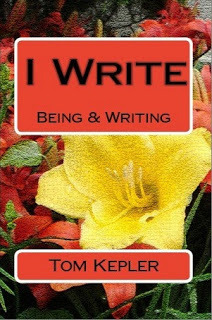 I have just gotten back from my beta readers the manuscripts of I Write: Being and Writing, an experiment with a new printer (CreateSpace) and with non-fiction (a collection of blog articles on writing).
I have just gotten back from my beta readers the manuscripts of I Write: Being and Writing, an experiment with a new printer (CreateSpace) and with non-fiction (a collection of blog articles on writing).It is so important in the final writing stages to obtain feedback from other readers. Everything we know when we write is lively in our consciousness. Writing is a holistic interaction of experience and imagination, yet actually writing sentences is a linear task. We literally write a manuscript line by line, sentence by sentence. Sometimes meaning can get lost in the "translation." Beta readers let writers know where the breakdown occurs in that transliteration of three-dimensional (or non-dimensional) vision into the logic of exposition.
Several perspectives from discerning readers provide the writer with a new perspective of the work, one limited to words read from the page. Should every suggestion or comment result in a change in the manuscript? Not necessarily. However, every comment is an opportunity to view what has been written through another's eyes, to ask questions, to think as a reader rather than a writer.
One thing that I've learned from the comments is that to write "I’ve attempted to maintain the focused-yet-informal style that blogs engender," which is part of the book's foreword, does not mean that the book's informal style means sloppy, lazy organization or exposition. It only means that the book's style appears to be informal or casual. The writer's work, my work, is to clearly state what I mean while appearing to be writing informally.
Going through the book page by page, looking at the handwritten comments on the hardcopies and then deciding what needed changing and how best to do it was a powerful, positive experience. After all, most of what I'd written didn't have to be changed. The suggestions presented, though, provided insight into where I could clarify my writing in order to make my message easier to understand.
Blog-to-book is more than copy and paste. My revisions, based on the comments of my beta readers, are more than fixing typos and such. I'm glad. I Write: Being and Writing, will be a better book for the revision, thanks to the insightful comments of my beta readers.
Copyright 2012 by Thomas L. Kepler, all rights reserved
Published on August 07, 2012 09:52
August 4, 2012
A Free Timer for My Desktop
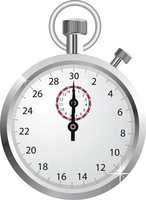 Sometimes I spend too much time with my marketing--interacting with LinkedIN network discussions, floating around on Facebook.
Sometimes I spend too much time with my marketing--interacting with LinkedIN network discussions, floating around on Facebook.I'm sure I'm the only person in the world to do that.
What I had tried to use before was a wind-up kitchen timer. It would buzz to remind me to move on to another project--namely, my current writing project. However, the timer broke. I won't mention where I bought it, but most of you would probably get it right in the first guess.
A week ago I downloaded a free countdown timer for my desktop.
The visual countdown display and the buzzer were just what I needed.
I had been reluctant to do this, though, because of the "gifts" that free downloads bring. I worked very hard with the download to uncheck the right boxes so that I would download only the timer, but I failed.
A new toolbar was added to my internet, which I had to uninstall. A straightforward set of instructions was provided with the download, but still . . . I hate fussing with that stuff.
However, I really like the timer. The countdown visual sits above any screen I'm working on (if I choose to let it), so I see it as a reminder. It's easy to set for hours, minutes, and seconds. I use the minutes setting for my marketing.
It works well--I've got twelve minutes left on it right now for today's session.
Here is the download URL: http://drive-software.com/freedesktoptimer.html
Just remember that I tried and failed at not downloading anything extra, so don't get mad at me if you have to read a bit and "uninstall" a toolbar also.
I want to add a photo to this post, so TIME'S UP! Happy writing to you.
Copyright 2012 by Thomas L. Kepler, all rights reserved
Published on August 04, 2012 04:13
July 30, 2012
My Garden and the Drought
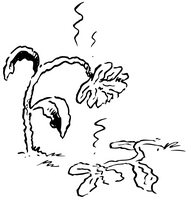 All four lima bean pole trellises looked beautiful . . .
All four lima bean pole trellises looked beautiful . . . However, no beans had set on any of the plants. The cauliflower and broccoli plants were large--except for the harvest. The bush green beans were stunted, without fruit.
Therefore, this weekend we started turning under some of our garden, focusing on the butternut squash, which have some nicely-sized squashes; the Amish variety cantaloupes, which have about a dozen melons; and the Moon and Stars watermelons, of which we have about ten growing.
Will they make it? Who knows?
We had already for the last few weeks been very selective on what we replanted, focusing mostly on what keeping plants already in the ground alive.
We did have some success with our earlier garden, eating and freezing peas, green beans, greens, and zucchini. We hope to plant a small greens garden for our front two raised beds for the late fall and early winter.
Our garden is an experiment in sustainable living. It's lesson this year is that "no garden is an island." Sustainable living must be a societal lifestyle. One family is like a drop of rain on the hot sidewalk, there and then gone.
Ah, well . . . We can remember the spring, and hopefully the cantaloupes will ripen soon.
Copyright 2012 by Thomas L. Kepler, all rights reserved
Published on July 30, 2012 04:38
July 24, 2012
A Book on Writing: a CreateSpace Experiment
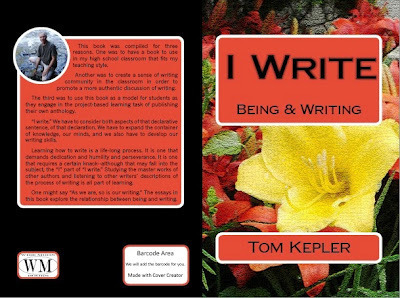
Using twenty essays taken from posts to this blog over the last three years, I Write: Being & Writing explores the nature of writing--focusing on the writer, the process of writing, and the written word.
I intend to use it in my classroom at Maharishi School and have added activities for writing and discussion that focus on educational psychologist's Robert Sternberg's different styles of learning: analytical, creative, and practical. Some of the essays in the first part of the book, "The Writer," focus on the relationship of consciousness and writing. I explore how Transcendental Meditation has helped me as a writer.
I'm seeing how easy it will be for students to do create their own book of writing with some guidance. It has taken about three weeks so far for me to compile the book. CreateSpace at Amazon has set up a pretty easy process (of course, I've published my other books using more advanced software). I'm not done yet but am getting close!
Here is the table of contents at this time:
The Writer 1 I Write: Being and Writing2 Privacy and the Inner Writer: the Man from Porlock 3 Thoughtful & Spontaneous Writing 4 Writing Without Focus to Discover Ideas 5 How Autobiographical Is Our Writing? 6 Finding Your Voice as a Writer 7 Voice and Vox Populi: a Divine Tension 8 Writing That Is Progressive & Evolutionary The Process of Writing 9 The Writing Process 10 Getting Ideas for Writing 11 How Does a Fiction Writer Organize Writing? 12 Choosing the Right Words 13 Expand Your Vocabulary: an Easy, Effective Approach 14 Sentence Fluency: the Flow of Consciousness The Written Word 15 Mechanics & Grammar: How Rough Is the Road? 16 Presentation: the Final Step of Writing 17 What to Learn from a Well-written, Effective E-mail 18 Kindle as a Writing Tool 19 Specific, Useful (and Positive) Comments 20 What’s the Difference Between a Writer & a Publisher? I'm looking forward to teaching these 21st century skills to my students. I Write: Being & Writing should be published by mid-August. Then I'll have a clear idea of how to structure the learning process for my students.
Copyright 2012 by Thomas L. Kepler, all rights reserved
Published on July 24, 2012 04:23
July 23, 2012
Run, Bike, Run, Walk, Run . . . Write
 Run, Bike, Run, Walk, Run . . .
Run, Bike, Run, Walk, Run . . . That's right, I've been exercising. It's not that I ever stopped exercising. I've ridden my bicycle regularly for years, and as a teacher, I am on my feet and moving all the time. I work in my garden.
It's just that now I've decided to be more organized, and what I'm finding is that my endurance is increasing. This is good.
I also discovered that although I had invested in good shoes for work, I had not for play, so I bought a good pair of running/walking shoes and a good pair of sandals in order to give my feet a break.
Rest and activity. Train, don't strain.
I'm not beating myself up, though. I run and walk alternatively, not just on alternating days but on my "jogging" days, too. There's no need to abuse the body, even though at first my body said, "What in the world are you doing, Tom!" I was firm and said, "Deal with it," with the realization that my purpose was to exercise, not to deal myself a healthy portion of masochistic pain.
So I'm off to exercise at dawn--the coolest time of the day (meant literally in this time of drought and heat).
Oh, and by the way, I'm also close to putting out another book--a non-fiction series of essays on writing, garnered from this writing blog. More on that later . . .
Copyright 2012 by Thomas L. Kepler, all rights reserved.
Published on July 23, 2012 03:04
July 12, 2012
I Write: Being and Writing
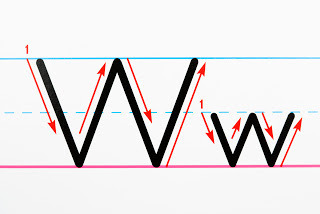 I write.
This is an independent clause, the most simple of sentences--subject and predicate, subject and verb.
I write.
This is an independent clause, the most simple of sentences--subject and predicate, subject and verb.Dogs bark. Fish swim. I write.
These simple sentences have two parts, the break occurring between the words. Some imperative (command) sentences may be only one word long: Write. Swim. Jump! You is the understood subject.
Looking beyond the content of these sentences to the structure provides some interesting insights. The subject is the knower, the doer, the one who acts; the predicate is the process, the action, the heartbeat of the sentence. They act together to create a complete thought, consciousness becoming dynamic.
To improve as writers, we have to consider both halves of the simple sentence I write.
We have to consider the subject, the I. If I am dull or impatient or distracted or unhealthy, what I write will lack my full effort. Like an athlete, I must be fully engaged when writing. I must continue to grow and expand as a person. I started writing for myself (and not just for class assignments) when I was fifteen years old. I would hope my extra years of living I have added to the experience and wisdom that I bring to writing.
When I was twenty years old, all I wanted to do was write poetry, but a frightening, sobering experience set me back--at twenty years of age, I found myself banging against the boundaries of my creativity. I was trapped within my limitations. All I wanted to do was to write, yet I saw and felt the limitations of my writing.
I was instructed in the Transcendental Meditation technique a week before my twenty-first birthday, and I've regularly practiced TM since that time. I believe that our outer expression of life has its basis in our inner life. TM has given me rest and has quieted that inner rabble that can be so distracting to creativity. It has deepened my inner life. It's also why I teach in a school that teaches a Consciousness-Based educational curriculum. I believe students should not only grow in what they know but also in their capacity to know.
I also exercise, try to eat well and get to bed on time. I try to live a good life because I don't want to be distracted from my writing. This last spring I came down sick with the flu, which morphed into walking pneumonia. It was the sickest I'd ever been in my life. I was distracted from my writing, from my job, from everything except getting well. It reminded me that being of sound mind and body is the basis of having a successful life--as sound of mind and body as we can get, anyway. We've all got our issues, but there's no need to exacerbate them.
For all those brilliant, neurotic writers in the world, God bless them, but they (or we) are brilliant in spite of neuroses, not because of them. And I don't include our oddities, peculiarities, eccentricities, idiosyncrasies--our bizarre, outlandish, freakish habits as necessarily being beyond the norm. I hold the norm to be a very diverse and differentiated population.
Other people may engage in different activities. I bike and walk and jog. I garden and enjoy the outdoors. Others may swim, hit the squash courts, bird watch, listen to classical music, or practice the slow dance of t'ai chi ch'uan's training forms. There are many ways to improve our health, whether it be inner or outer, mental or physical. I like TM because it doesn't exclude other pursuits; it just takes us to that state of least excitation of consciousness, and from that quietness, we then move into activity, like the archer fully drawing the arrow on the bow and then releasing it. It's all part of the beginning half of the simple sentence I write.
The other half of the sentence is the verb: write. It is the process, the skill, the action. By definition a writer is one who writes, as simple as that. The trick is, OK, how well do we write? How well do we understand the process of writing?
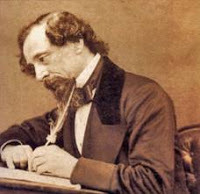 Charles DickensLike all skills, learning how to write is a life-long process. It is one that demands dedication and humility and perseverance. It is one that requires a certain knack--although that may fall into the subject, the I part of I write. Studying the master works of other authors and listening to other writers' descriptions of the process of writing is all part of learning.
Charles DickensLike all skills, learning how to write is a life-long process. It is one that demands dedication and humility and perseverance. It is one that requires a certain knack--although that may fall into the subject, the I part of I write. Studying the master works of other authors and listening to other writers' descriptions of the process of writing is all part of learning.I write. We have to consider both aspects of that declarative sentence, of that declaration. Expand the container of knowledge. Develop writing skills. In both of these imperative sentences, the unspoken subject is you . . . or I, because I'm a writer.
I write says a lot. We must live integrated lives . . . and I haven't even attempted to discuss the sentence I am, a much more abstract, more difficult subject. Am is a state of being verb without action, only amness, isness, unity. There is a saying, that language stands at the door of the transcendent and awaits our return.
We return, as Dylan Thomas said, to our "craft or sullen art," attempting to to find meaning in a process where our efforts, according to Archibald MacLeish, at their best, "should not mean but be."
Copyright 2012 by Thomas L. Kepler, all rights reserved
Published on July 12, 2012 04:00
July 10, 2012
The Amazing Spider-Man (2012): What Makes This One Different?
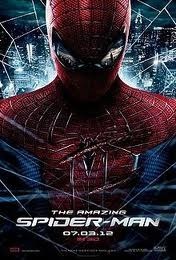 I'll be honest. I like the earlier Spider-Man movies with Tobey Maguire and Kirsten Dunst, so I guess I'll just have to say that I really like The Amazing Spider-Man with Andrew Garfield and Emma Stone.
I'll be honest. I like the earlier Spider-Man movies with Tobey Maguire and Kirsten Dunst, so I guess I'll just have to say that I really like The Amazing Spider-Man with Andrew Garfield and Emma Stone."Like most teenagers, Peter is trying to figure out who he is and how he got to be the person he is today. Peter is also finding his way with his first high school crush, Gwen Stacy, and together, they struggle with love, commitment, and secrets. As Peter discovers a mysterious briefcase that belonged to his father, he begins a quest to understand his parents' disappearance - leading him directly to Oscorp and the lab of Dr Curt Connors, his father's former partner. As Spider-Man is set on a collision course with Connors' alter-ego, The Lizard, Peter will make life-altering choices to use his powers and shape his destiny to become a hero." (Written by Nicky Mitchell at IMDb)In the earlier Spider-Man movies, the action and teen drama are balanced to create that special Spider-Man ambiance of teen versus them. I think Spider-Man 2012 captures it better. The earlier Spider-Man movies viewed teens from an adult perspective, where The Amazing Spider-Man sculpts dialogue and action more from a teen perspective.
The pace of teen confrontation moves quickly; in fact, all the high school scenes capture that sudden, emotion-infused moment.The dialogue is believable with a great deal being said with a few words, some muttered, facial expression and body language: an entire world-view expressed with a shrug, a sneer, or a handful of words.Adult-teenage interactions involve as much walking away as heart-to-hearts. It's difficult for Peter Parker to express what he's feeling.The teenagers are more unpredictable, more mercurial in the 2012 movie--personalities in transition, out-pacing the understanding of the teens themselves.Technology is a part of the landscape. Even while suited up, Spider-Man's got to answer his cellphone. Science and technology seem to fit more seamlessly into the new movie's plot, too. Another strength of the movie was character motivation. The fact pace of the movie provided an understanding of character action without scenes becoming maudlin. I thought at first that actress Emma Stone as the girlfriend was too old for the Andrew Garfield Spider-Man. However, we then meet the girlfriend's dad (Denis Leary)--and that explains a lot. The antagonist Dr. Curt Connors is a haunted man with a need, and that character is nailed by actor Rhys Ifans. Uncle Ben and Aunt May, played by Martin Sheen and Sally Fields, provide credibility, and Fields makes excellent use of her greater screen time to say volumes with facial expression.
A lot has to be given to director Marc Webb and screenwriters James Vanderbilt, Alvin Sargent, and Steve Kloves. The teen years are a tangled web, and this movie delightfully snares us, heart and soul.
Copyright 2012 by Thomas L. Kepler, all rights reserved
Published on July 10, 2012 04:00
July 7, 2012
What to Learn from a Well-written E-mail
 Unless we're writing our parents, it's best to ensure our e-mails are enticing, useful, and succinct--otherwise, they will quickly find their way to the trash.
Unless we're writing our parents, it's best to ensure our e-mails are enticing, useful, and succinct--otherwise, they will quickly find their way to the trash.I recently attended an e-mail writing workshop led by professional writer Christine Schrum which provided me with both some new information and some useful reminders. She called her workshop "Email Copywriting 101," but it could just as easily, except for a few specifics, have been "Effective Writing 101."
What did I learn that was specific to e-mails? Two things, really.
Have a strong subject line. Get to the point, avoid obvious spam words, or get trashed.Emphasize benefits over features. Benefits highlight the value of the information contained in the e-mail. Features provide specific details but need to be tied to value or significance.Having a powerful title and considering one's audience are two good points of advice.
Other tips were more general in nature--ones that are needed when writing e-mails but are also good for most forms of writing.
As an author, have a consistent name. I shouldn't be Tom Kepler one day, T. Kepler the next, and end the week as Thomas Kepler.Hook the reader with the first sentence, paragraph, title. This is especially true with media writing where you are in competition with a menu of emails or pages of other titles and stories.Use active voice, action verbs, and proofread. Don't bore or bruise your reader.Keep it short. This is especially true with e-mails and in formats that are read for information. Both news writing and emails work best when the information is not presented in large, dense blocks of print.CTA = Call to action. As Christine said, "Leave readers with a clear indication of what to do next."The next time you write an e-mail, check to make sure that you're using effective writing techniques. Follow Christine Schrum's advice and "always send yourself a test email."
And let me add a suggestion of my own--if you've got the time, don't open the e-mail for an hour or more. That way, you can more objectively ask yourself, "Does this really do the job? Have I communicated in a powerful, concise, effective way?"
Copyright 2012 by Thomas L. Kepler, all rights reserved
Published on July 07, 2012 14:17



